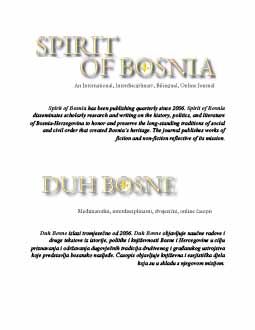
We kindly inform you that, as long as the subject affiliation of our 300.000+ articles is in progress, you might get unsufficient or no results on your third level or second level search. In this case, please broaden your search criteria.

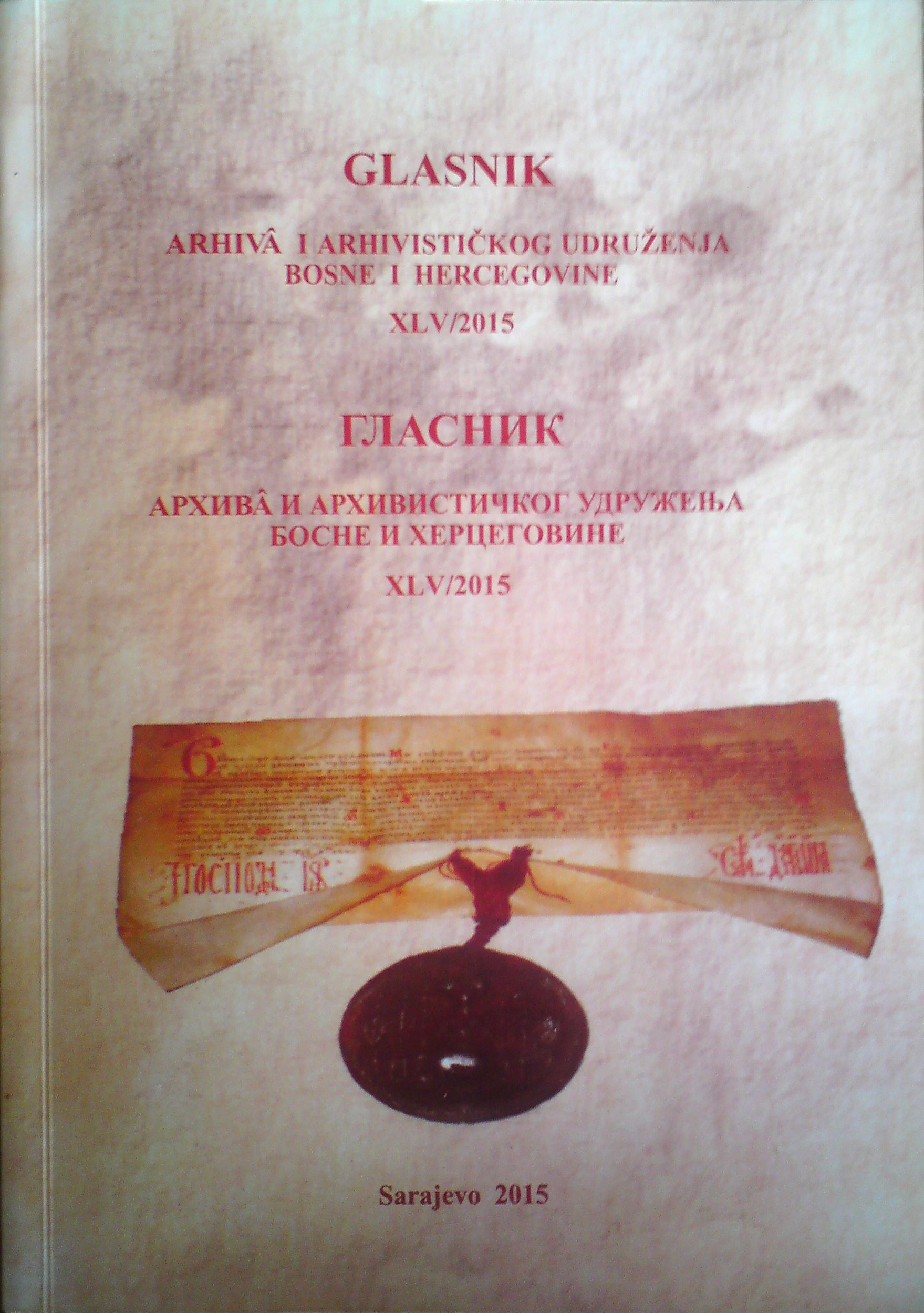
The development of new information technologies initiated the need for norm setting and standardization in the field of archival description. In contemporary society, it has become necessary to standardize the methods for making the description of archival materials, as well as formats for data exchange. Archival standards of the International Council on Archives (MAS): ISAD(G) – The international standard for archival description i ISAAR(CPF) – The international standard archival authority record for corporate bodies persons and families, ISDF – The international standard for describing functions i ISDIAH – The international standard for describing institutions with archival holdings that preserve archival materials used for the production of standardized means of information. Center for Information of Archives of Vojvodina designed a module for fund and collection processing within Information system of Archives of Vojvodina (ISAV) that supports thos standards for creaton of electronic information resources. In this module processes all funds and collections of Archives of Vojvodina that increase bases of available information resources day by day and will be soon available online to our customers.
More...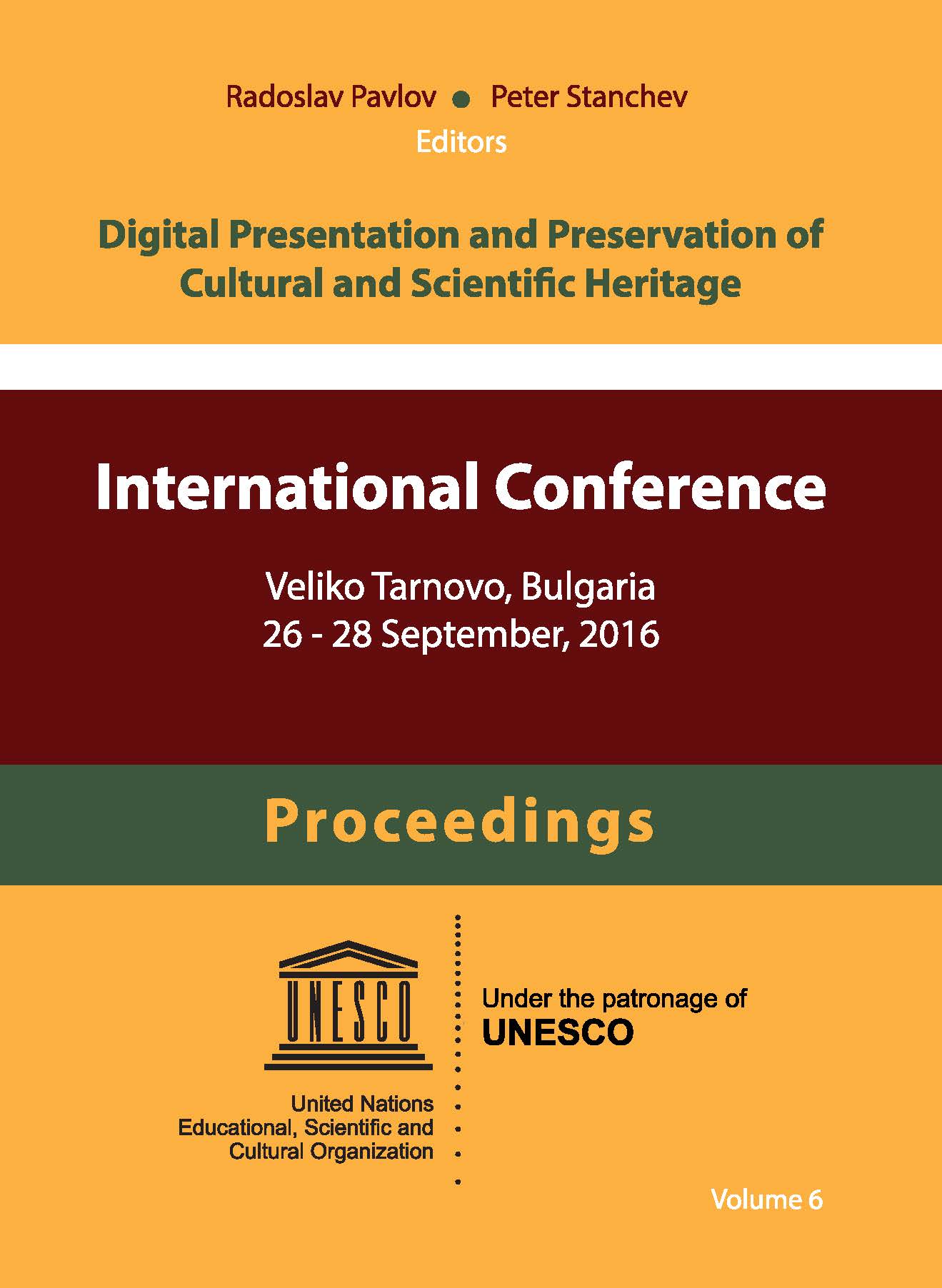
In the following article main results are going to be summarized about three-dimensional web development and technologies. An introduction to 3D representation methods that are applied on the featured three-dimensional webpage is going to be presented. Transformation techniques will be described, which convert a traditional two-dimensional webpage into a fully functional three-dimensional platform. The methods and concepts used are based on technologies such as HTML, CSS, and JavaScript. The principle of automatic conversion is going to be showed, upon which almost any two-dimensional webpage can be converted into a 3D website, including minimal manual interaction. Future concept and conclusions are also described.
More...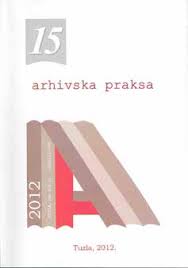
In summary we can state that there are not many differences between archival standards ISAD(g) in one side and information in electronic archival information system AFondy and Methodological instruction for priority processing archival fonds on the other side. As yet unresolved area we see a strict hierarchical division of information about archival described by the level of individual items. Impulse for comparison with international standards, use of archival applications was need to solve a question if we are “compatible” with the world. Even before the future we take a final decision to adopt the standard or not, we have to answer a lot of questions. Hereby, we must recognize the entering of computer processing, online access to archival documents has influence at the unit and content of archival description. Maybe to the final decision help view of Lisa Weber, who says “The use of standards for archival description allow to avoid syndrome perpetual inventory making and force archivists to take the final decision and not to return constantly to solve the same issues.”
More...
This paper presents the development of archival legislation in the Republic Slovenia, a work especially looks at developments concerning the proposal to amend supplement archival law, relating to the question of the reorganization of state archive service and the question of access to archives. Proposed amendments presented in its original form is not submitted within the decision-making in Parliament, because it was necessary, to previously resolve the legal provisions relating to the question of access archives and protect sensitive archive material. Adoption of the proposed law in Parliament, led to a legislative referendum, which was held in 2011.
More...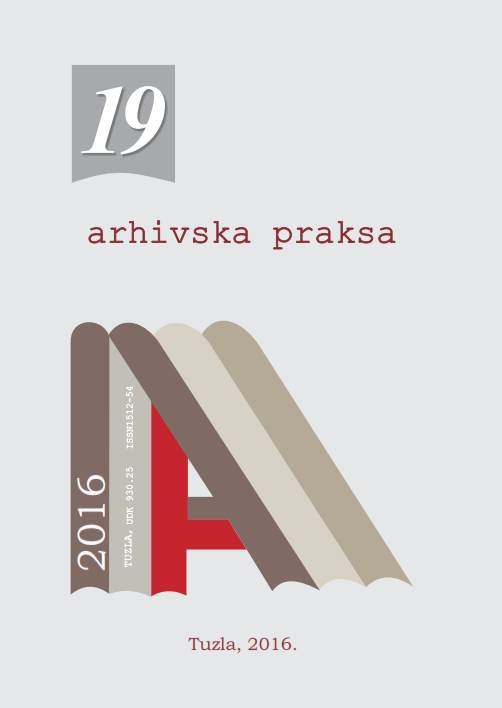
The archival collection consists of artificially merged documents, which were collected on the basis of certain common characteristics, regardless of their provenance. The author introduces us to collections of different provenance, stored in the Archives of Tuzla Canton. The work is in addition to general collections, highlight and personal and family collections that represent important and significant historical testimony for the study of local and regional history and prominent public figures, cultural and socio-political life. Archival collections represent an important archive material, which is an important source of information and of which depends on the preservation of memory of society and community. For these reasons, this paper aims to highlight the importance and use of the same in the Archives of Tuzla Canton, as well as their technical and technological protection, primarily on the experiences arising from the process of digitizing and later use them citing some advantages and disadvantages.
More...
The modern archive building with modern designed storage space and physical - technical security documents is a basic prerequisite for good protection of archival material. In Serbia, unfortunately, this issue is not given due attention, which is far behind countries with developed archival activity, such as the UK, Germany, Australia and the United States. The theme of this paper is to highlight the importance of a dedicated facility designed archival building, featured by which standards are fulfilled conditions necessary for the functionality of the archive building, as well as how and to what extent these standards are used in the construction of the new building of the Historical Archives of the City of Novi Sad.
More...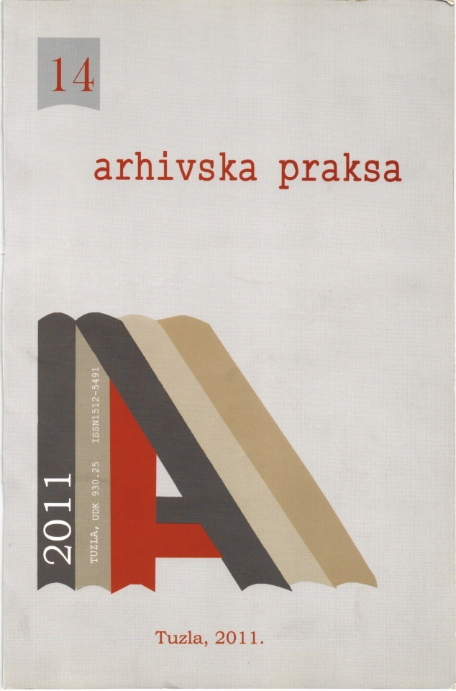
The paper summarizes the background and process of creation of the Hungarian Archives Portal, which provides a common solution for the on-line publication of databases and digitized archival documents for the cooperating archival institutions. The two main functions of the portal are: provide up-to-date information on archives for professionals, for users and for the general public (e.g. research rules and possibilities, legal framework, new publications, exhibitions, conferences, projects, professional guidelines etc.); and service a joint database integrating the various individual archival data and digitized archival records (maps, documents, files, etc.) of the collaborative institutions. The paper focuses on the second function, describing the structure, content and services of the Joint Archival Database, which is made up of six separate databases (integrated database, fonds and subfonds, cadastral maps – settlements names, documents of the communist party, archival publications, archontology and name directories) in one frame system.
More...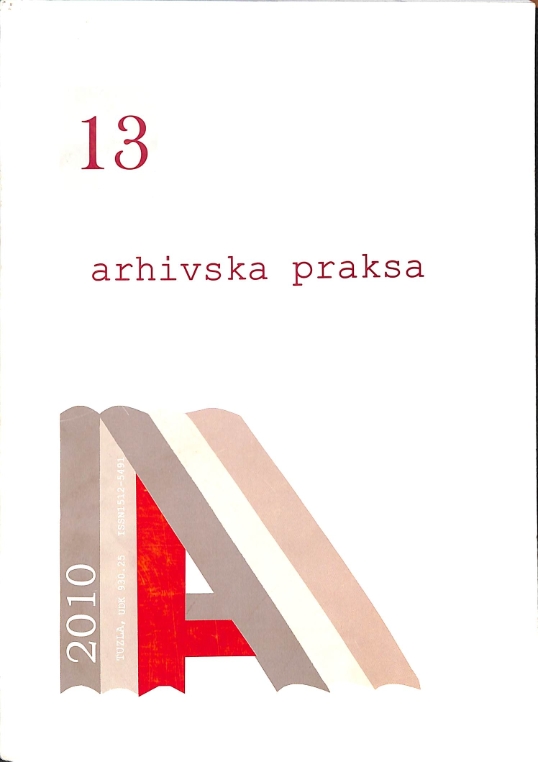
This paper draws attention to the necessity of carrying out the process of digitizing and microfilming of archival-grants, collections and library fonds in the archives. This paper represent work of the Archive of Tuzla Canton and its past activities and review of performed steps in providing better service for customer when it comes to digitized material.
More...
Although the State Archive in Osijek has almost all kinds of unconventional material, this work is based on only two, and these are the photographs and a documentary film. Due to the large number of images (approximately 55,000) and documentaries (114) as well as high demand for materials by the user and the Archive, at the end of 2007, the analytical processing of pictures and documentaries. Inventories are made in the form of a table with 11 elements of description through which describes most of the photos and all documentaries.
More...
State of preservation of archival materials taken from the field of education funds in the Archives of Canton is unsatisfactory. No funds are complete (they are rather fragmentary) nor their physical condition is proper. Neither the state of archival arrangement is not appropriate, although funds are available for use for scientific and other purposes. Because of the fragmentary structure of a small number of funds has inventories completed. That seems reasonable and justified by the fact that the majority of funds covers the period up to 1945. whether the registry stopped working or it continued to work, as is more often the case. Archives took over the holdings of various associations and joint institutions in the field of education made in accordance with the joint paper in 1976. which is good. In short: the state of registry and archival materials in the field of education must be given greater attention. We would be necessary to restore some of the archival funds from current and archival materials ,,live" registry, which requires adequate archival research. It would also be needed that at the stage of archival fund formation there should be concrete following of archival standards.
More...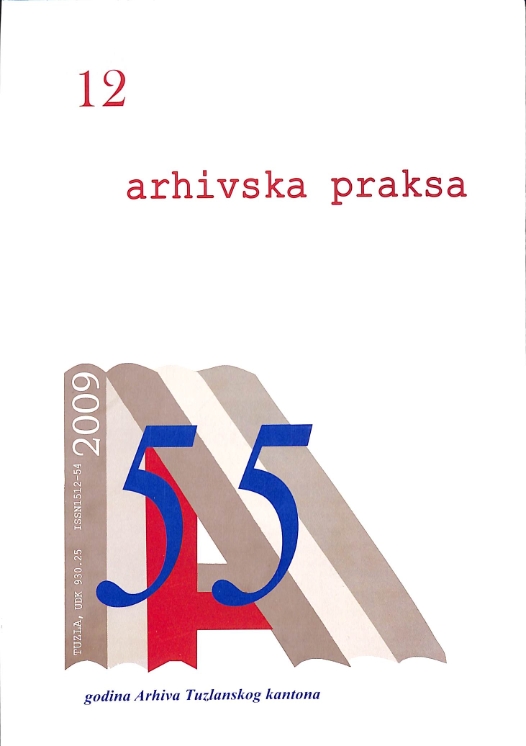
Since the establishment of the sovereign Republic of Croatia and since the change of social and political system, archival activities and work of state archives have been influenced by various processes: transition, democratization, introduction of information technology, globalization, mod ernization of state administration, dissemination of neeliberal economy, development of information society and many others. Archives have been faced with enormous quantities of archival records on which they were not specifically focused in the previous period, and also with issues concerning transfer, arranging use, ownership relations and other problems concerning that material. Expansion of the framework of activities, development of new services and adaptation of traditional tasks to market conditions and modern social trends, all additionally pointed out the old, so far unresolved problems and led to the appearance of new ones. This paper shows some of the fac tors considered prerequisites for the successful work of Croatian archives in the modern environment unification and standardization of business pro cesses, fulfillment of supervising function in relation to the creators, develop ment of information role of the archive and implementation of a integrated national archival system.
More...
MATRA Program is the bilateral pre-access technical assistance pro- gram of the Dutch government for pre-access aid for European collaboration and institutional support projects whose goal is the adoption and application of the legal legacy of the EU, only in terms of technical assistance. At this level, the Netherlands has approved two projects, one of them is a project of Administrative and management reform of Croatian archival service. This project took place in several distinct segments, divided into three main areas: legislative, institutional strengthening and professional archival services and pilot projects are the most important areas of archival services.The project was implemented in the period between 2007.-2009, and its purpose was to support the Ministry of Culture and archival services in the Republic of Croatia to ensure the adequacy of the structure and operation of business records service as a whole, adoption and implementation of policies and recommendations of the European Union, and ultimately achieving the competencies for collaboration and participation in European programs and projects.
More...
One of the most important and most extensive registry or creators records in the jurisdiction of the Archive of Tuzla Canton is Clinical Center Tuzla. This institution is paid great attention to the issue of office and archival operations and this area is arranged in accordance with the legislation. Special importance is devoted to the realization of human and civil rights, which is reflected in the character of arrangement current records (medical and other documentation) that occurs in the work of the institution, as well as areas of cooperation with customers. Therefore, it was necessary to create a regulated system, which included arranging of archival material and the regulation of office management so the needs of consumers can be satisfy. The organization of the office and archival operations within the institution is governed by a system of monitoring and information management, which is very important when using them. Today, the institution current records are properly arranged and creator carried out measures provided by low for recording, protecting and handling. Results in this area are clearly visible, because properly conditions for accommodation of material are created.
More...
The article gives a brief overview of the history development and the emergence of international standards of archival description, focusing on two new standards, officially adopted at XVI. Congress of the International Council on Archives: ISDF - The international standard for the description of the function of creators of material and ISDIAH - International standard for the description of institutions possess archival material. It also shows their relationship with two previously adopted standards: ISAD (G) and ISAAR (CPF), and connectivity options descriptions generated by their use.
More...
Implementation of the new computer technologies in the companies is increasingly coming to the storage of archival material in electronic form in a variety of carriers of digital information. Advantages of using the electronic archive are many. Government brought regulations and laws in this area. Many of companies for that reason accepted this way of archiving.
More...
The efforts of Bosnian society to approach and follows the developed countries through information technology has led to the development of information technologies in various spheres of our society, including the judiciary of Bosnia and Herzegovina. The use of paper documents into business generates significant limitations, costs and risks. Circulation of paper documents is slower than the flow of information processes supported by modern software applications, and negatively affects the speed and quality of the process. In addition, the manipulation of paper documents, particularly in dislocated environment is causing damage and loss of documents, which can have significant consequences. Archives of Bosnia and Herzegovina will meet with these and similar systems management documents, which requires a certain adjustment in the work of Service for protection of archival material outside the archives.
More...
In this was presented state of archival material, creators of archival material and its reception in the archives. It explains the measures for its protection in terms of conservation and restoration. It should be noted that in Kosovo operate only one laboratory for conservation and restoration, which employs two workers. Still, this laboratory has so far achieved remarkable results. The plan is to establish another such laboratorie in the archives in Pristina.
More...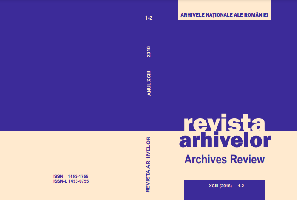
The name of the German chemist Otto Hahn is closely associated with the discovery of nuclear fission of uranium in 1938, through which Hahn and his coworkers laid the foundation for the usage of nuclear power as well as nuclear weapons. Hahn himself was interned in England after the war, but was awarded the Nobel Prize in chemistry retroactively for the year of 1944.
More...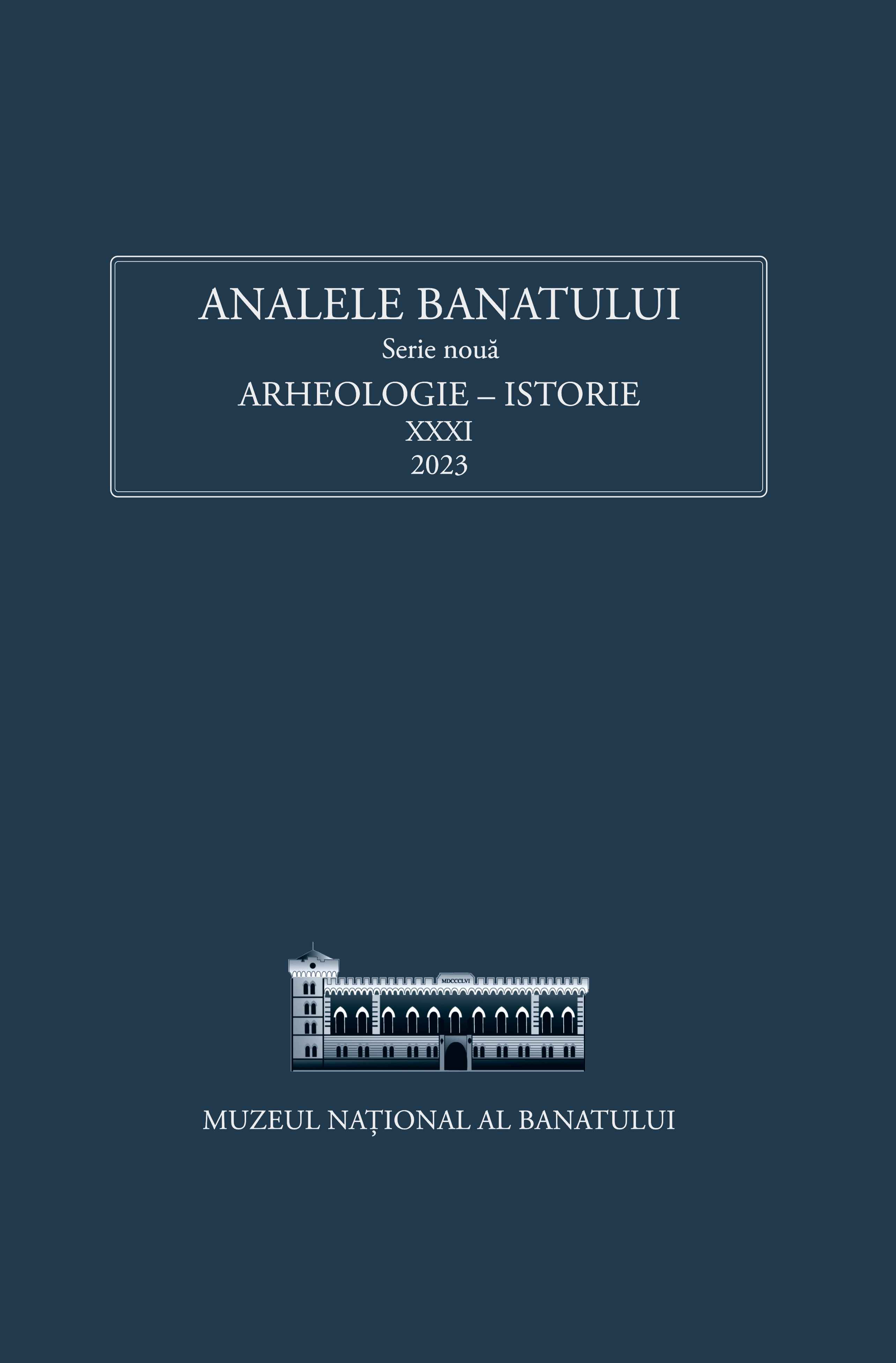
In the first half of the 18th century, following the establishment of the two Magistrates, German and Rascian, in Timisoara were created the armed Citizen Guards, which had both a military role, being involved in the Austro-Turkish conflict of 1738–1739, and a civil one, ensuring the security and city order, quarantine in hospitals etc. Known as Bürgergarde and Freie Compagnie, these units are quite rarely mentioned in documents until 1781. With the granting of the rights of free royal city in 1781, the Citizen Guards were reorganized in Timisoara, being equipped with new uniforms, weapons and flags. According to the preserved statistical data, in 1782 the German guard had 154 members, and the Serbian guard had 118 members. The German and Serbian detachments of the Citizen Guard were placed under the command of the mayor of the city. Two decades later, in 1809, the Citizen Guard from Timisoara counted 1400 pedestrians and a company of 100 horsemen. The cavalry division, equipped similar to the Austrian dragoon units, was generally recruited from the German population, while the infantry was recruited from the German and Serbian citizens, but organized separately. The two M. 1836 helmets kept in the collection of the National Museum of Banat are among the few pieces of this type owned by museums in our country. Over time identified with the Shooting Society or with the fire brigade, the helmets are originally of military origin, being produced for the Austrian cavalry officers, during the reign of the emperor Ferdinand I (1835–1848). The Citizen Guard from Timisoara adopted helmets in the equipment of the cavalry company, later the equipment being generalized to all units of the Guard. Dissolved in 1848, the Citizen Guard in its old structure was not re-established in the following period. The pompous equipment of the past ended up in the patrimony of the families of the former guards and in the props of the Shooting Societies, societies established by the members of the Guard. Two of the M.1836 helmets once worn by the members of the Citizen Guard became part, through the kindness of Meskó Béla and Babusnik Emil, of the museum’s collection, being today among the most attractive exhibits of the military collection.
More...